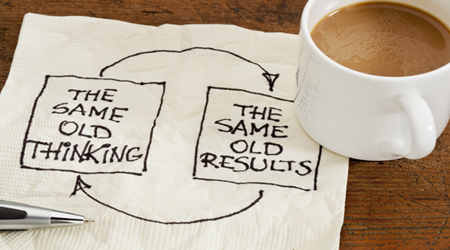One of the most profound influences on our success is our own mindset. Tony Robbins, one of the world’s best-known motivational speakers, cites 80% of a person’s success as down to how they manage their own psychology.
Much of who you are on a day-to-day basis comes from your mindset, which is a view on your qualities and characteristics – where they come from and whether they can change. Carol Dweck, a recognized authority on motivation and development, writes about two mindsets that represent the extreme ends on either side of a spectrum:
- A fixed mindset comes from the belief that your qualities are carved in stone – who you are is who you are, period. Characteristics such as intelligence, personality, and creativity are fixed traits, rather than something that can be developed.
- A growth mindset comes from the belief that your basic qualities are things you can cultivate through effort. Yes, people differ greatly – in aptitude, talents, interests, or temperaments – but everyone can change and grow through application and experience.
Its very possible to be somewhere in the middle, and to lean a certain way in one area of life, and a different way in other areas. Your views may be different for artistic talent, intelligence, personality, or creativity. Whatever mindset you have in a particular area will guide you in that area.
In our experience in working with organizations looking to increase sales or improve customer service, one of the most common serious limitations revolve around self-defeating mindsets to do with marketing or building their business. Several common mindsets we have heard include:
- Our company is too small to compete with larger firms
- I don’t truly believe what we offer is any different from what others offer
- I don’t have the skills to create a plan for my business
- I’m not qualified (educated, experienced, etc.) enough yet
The main problem when it comes to negative mindsets, whatever they may be, is that the mind tends to believe them. By attaching yourself to a negative mindset, they become an unquestioned truth – one that is lived and acted out. If your mindset is negative around building your business, for example, then your mind will automatically find reasons not to do it, and focus on other things. Ultimately, this leads to poor performance.
In helping our clients to attract and retain more clients, we found many of them limited by their own fixed mindsets, making it difficult to progress with their business. We then came across the work of Byron Katie, in her book Loving What Is. Her process, which she calls ‘The Work’, consists of describing a problem, asking yourself four questions, and a ‘turnaround.’ The four questions get at the very heart of a mindset and the turnaround helps to reverse that mindset, often permanently. Katie recommends writing out the answers to these questions by hand, being totally honest with yourself and how you feel.
Describing the problem
These questions help define what it is that is holding you back or making you feel negative:
- What is something you want but don’t have now and feel stuck?
- What are all your feelings (not thoughts) about not having this?
- Was it your limiting thought, mindset or belief regarding this?
The four questions
Answer these questions to investigate your issue, whether its is factual or simply a mindset that effects your thoughts, actions, and results:
- Is it true (yes or no)?
- Can you absolutely know its true (yes or no)?
- How do you react or behave when you believe this is true?
- Who would you be, or how would things be if it were impossible to attach to this belief?
The turnaround
Finding opposites to your original limiting statements identified in the first set of questions can lead you to powerful realizations of your potential:
- Turn the original statement around to its opposite
- Is that turnaround just as true or truer than the original belief?
- Write down your insights about doing the work on this belief
Often what stops us from achieving our goals is our own mindsets. A fixed mindset is more focused on beliefs that can’t change, while with a growth mindset, efforts are taken to learn and adapt in order to achieve. When faced with seemingly insurmountable challenges, we can follow the simple process above to define, investigate, and turn around challenges into paths to success.
Source: ACK Solutions









Leave A Response